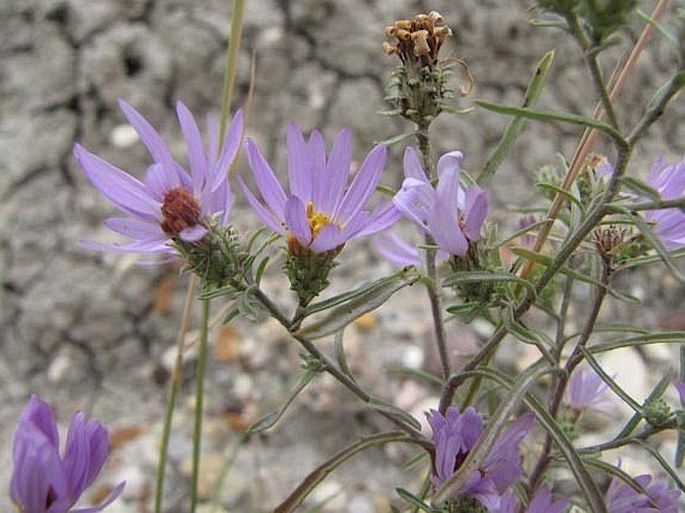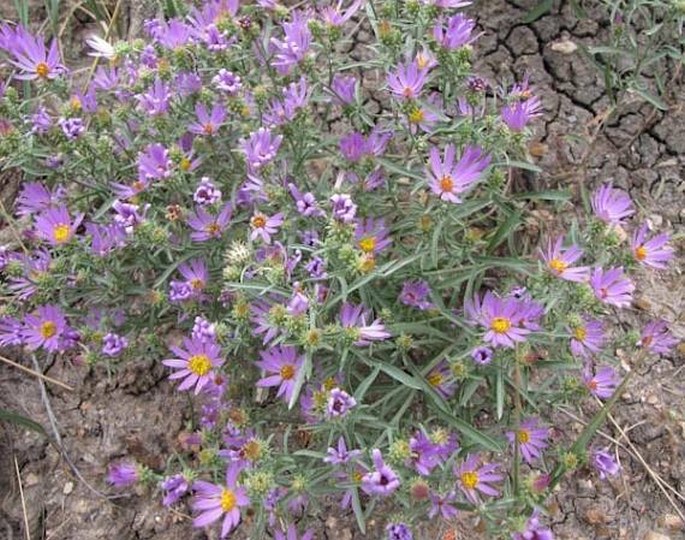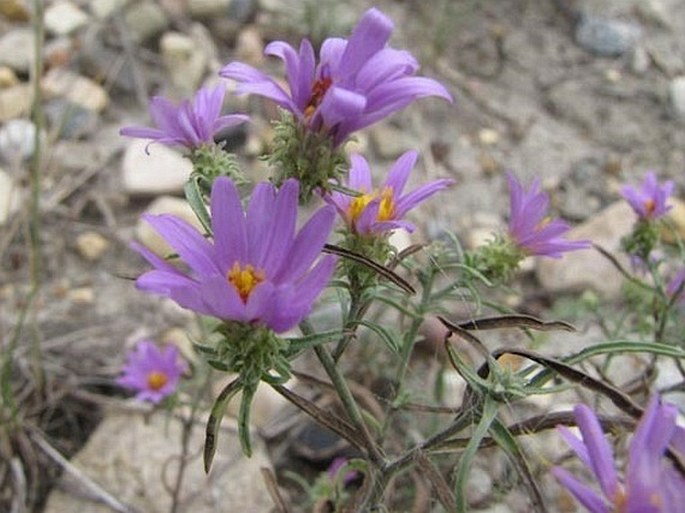Syn.: Aster biennis Nutt., nom. illeg., Aster canescens Pursh, Machaeranthera canescens (Pursh) A. Gray
Family: Asteraceae Bercht. et J. Presl

Distribution: West of North America, from the west of Dakotas and western Texas to California, from Alberta to Chihuahua in Mexico. The most common is the nominate variety which is found in Rocky Mountains, prairies and Sierra Nevada, var. ambigua in Utah, var. aristata in Colorado and Utah, var. glabra in Idaho and Washington, var. leucanthemifolia in California and Utah, var. nebrascana in Nebraska and S. Dakota, var. sessiliflora in Idaho, var. shastensis in California, Nevada and Oregon, and var. ziegleri in California.
Ecology: Nominate variety grows in grasslands, shrubbery, pine forests, in elevations 1000 to 3000 m. Blooms from July to November. Var. incana descends to only 300 m and var. shastensis climbs Mt. Shasta up to 3400 m.

Description: Annual, biennial, even perennial herb to subshrub. Stems and branches are bare or hairy, and sometimes glandular. Leaves alternate, oblong to spatula-shaped near base, linear at top, 1–3.5 cm long, 4–40 mm wide, margins entire to slightly toothed. Flower heads borne in an open panicle; heads 15–25 mm across; disc florets yellow; ray florets bluish purple; bracts with green midrib and reflexed tips in several rows. Fruit is an achene with a pappus.
Note: Genus Dietera includes only 3 species from North America. As they are highly polymorphic, this genus can be divided into at least 50 taxa. It belongs to a giant group of American asters, which include among others the following genera: Eurybia, Herrickia, Heterotheca, Machaeranthera, Oreostemma, Symphyotrichum, Triniteurybia, Xanthisma.


These images were taken in Canada, Alberta, Horseshoe Canyon, Drumheller badlands (summer 2012).


